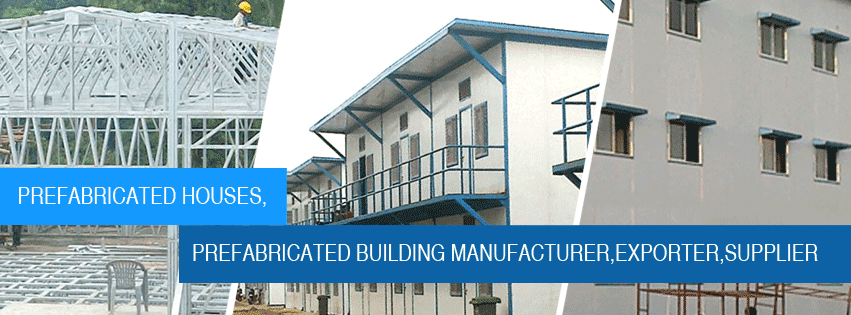Prefabricated metal buildings are buildings that are constructed by prefabrication( the process of manufacturing components at a factory and then assembling them at a specific site). Considering the various advantages these accord such as cost effectiveness and minimal maintenance requirements, it won't be an exaggeration to say that these buildings are a perfect solution for various commercial, industrial and agricultural applications. In fact, the popularity of prefabricated metal buildings has considerably increased over the past few years across the world, with application areas that erstwhile were not thought of as fit for these buildings now increasingly being flooded with them.
Epack Polymers Pvt. Ltd. is a ISO 9001:2000 certified organization established in the year 1989 that is engaged in offering prefabricated metal buildings. Apart from prefabricated metal buildings, some other products of the organization include railway telecom shelters, industrial sheds, ripening chambers, EPS panels and many more. Since establishment, Epack Polymers Pvt. Ltd. has steadily grown, with its products being acclaimed universally. Going forward, this growth trajectory is only expected to continue.
History of Prefabricated Metal Buildings :-
Prefabricated metal buildings have probably been manufactured for over a couple of centuries, with the first advertised prefab building being the Manning cottage in Australia. Advertised in the year 1837, a London carpenter named Henry manning constructed the building components, afterwards shipping and assembling them using the services of innumerable British emigrants. The usage of prefabricated metal buildings gradually grew in Australia and consequently also spread to other parts of the world such as the Caribbean, England and also the United States.
During the second war, prefabricated metal buildings were widely used for providing temporary shelters to military personnel. After the end of second world war, these buildings were the preferred solution when it came to providing housing to people whose homes were destroyed in the war. From here on, the usage of prefabricated metal buildings kept increasing worldwide, fueled by the economic boom in United States and Europe.
Advantages of Prefabricated Metal Buildings :-
Application areas of Prefabricated Metal Buildings :-
Epack Polymers Pvt. Ltd. is a ISO 9001:2000 certified organization established in the year 1989 that is engaged in offering prefabricated metal buildings. Apart from prefabricated metal buildings, some other products of the organization include railway telecom shelters, industrial sheds, ripening chambers, EPS panels and many more. Since establishment, Epack Polymers Pvt. Ltd. has steadily grown, with its products being acclaimed universally. Going forward, this growth trajectory is only expected to continue.
History of Prefabricated Metal Buildings :-
Prefabricated metal buildings have probably been manufactured for over a couple of centuries, with the first advertised prefab building being the Manning cottage in Australia. Advertised in the year 1837, a London carpenter named Henry manning constructed the building components, afterwards shipping and assembling them using the services of innumerable British emigrants. The usage of prefabricated metal buildings gradually grew in Australia and consequently also spread to other parts of the world such as the Caribbean, England and also the United States.
During the second war, prefabricated metal buildings were widely used for providing temporary shelters to military personnel. After the end of second world war, these buildings were the preferred solution when it came to providing housing to people whose homes were destroyed in the war. From here on, the usage of prefabricated metal buildings kept increasing worldwide, fueled by the economic boom in United States and Europe.
Advantages of Prefabricated Metal Buildings :-
- The usage of these buildings speed up the overall construction process, thus saving on labor and other incremental costs.
- Minimal effect of natural occurrences such as extreme weather on construction process.
- Compared to site built construction, there is lesser wastage of materials.
- Prefabricated metal buildings are ideal for use in large projects such as government housing schemes, official complexes etc.
- The buildings have optimal resistance to corrosion and abrasion.
- The construction of these buildings is much more environment friendly than on site constructed ones.
Application areas of Prefabricated Metal Buildings :-
- Warehousing.
- On site storage facilities.
- Workshops.
- Temporary fire stations.
- Recreational buildings.
- Educational buildings.
- Temporary commercial facilities such as showroom space.
